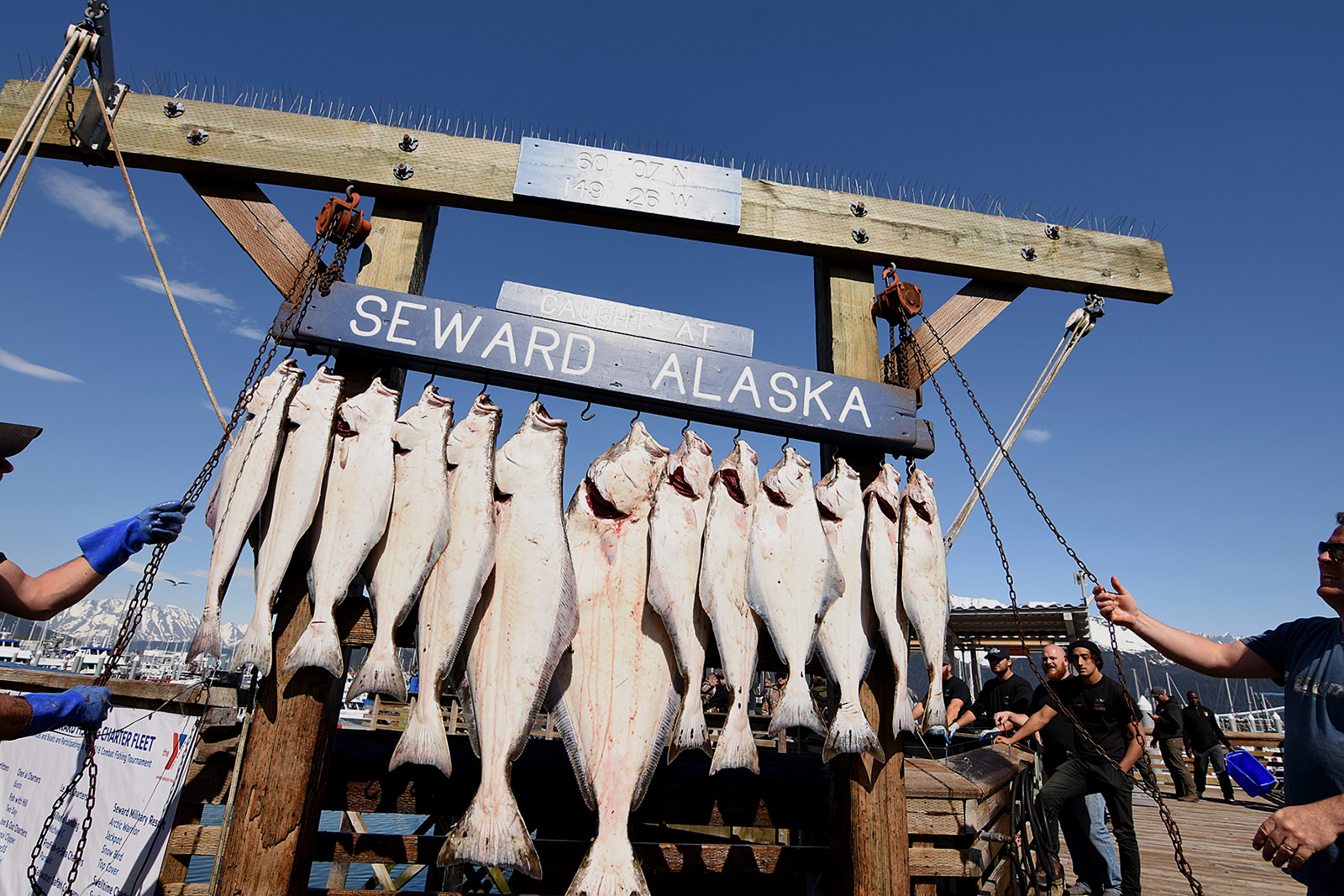Halibut’s high-quality taste and texture makes it a hot commodity for seafood fans. In the mid-1990s, halibut retailed for about $12 per pound. The price has increased significantly over the past 25 years, almost tripling its long-gone $12 price, due to a combination of factors. Halibut price currently clocks in around $20-$30 per pound.
Be wary of additional shipping costs, as the lower priced halibut that sells for $20 per pound usually does not factor in what it will cost to ship. Some online seafood retailers offer free shipping if customers purchase a certain amount of halibut, so buying in bulk can often save shipping costs.
Purchasing halibut closer to one of its sources? You’re in luck! Cutting out the product’s travel costs and buying straight from a fisher, or market, can decrease price. In-state Alaskan halibut prices are separated into three weight-based pricing categories. Prices for Alaskan halibut are $6.45 a pound for 10 to 20 pounders; $6.75 for 20 to 40’s and $7.00 a pound for “40 ups.”
Alaskan Halibut Fillets & Portions
| Company | Min. Order | Price/lb | Reviews | Rating | Website |
|---|---|---|---|---|---|
| Global Seafoods | 10 lbs | $28.50 | 1,130 | 4.6 | |
| Wulf’s Fish | 1 lb | $29.00 | 764 | 4.9 | |
| Sizzlefish | 3.5lbs | $39.70 | 341 | 4.9 | |
| Lummi Island Wild | .5 lbs | $41.00 | 21 | 4.8 | |
| Fulton Fish Market | .5 lb | $47.20 | 604 | 4.4 | |
| Seabear Smokehouse | 1.5 lb | $53.00 | 273 | 5.0 | |
| Vital Choice | 1.5 lbs | $54.66 | 23,132 | 4.8 | |
| Sea to Table | .6 lb | $51.00 | 2,784 | 4.7 |
Quotas Increase Halibut Fish Price
Halibut became overfished in the early 1990s, and the Canadian government implemented a quota system in order to save the vulnerable halibut populations. Halibut fishing now requires a license, and those licences are handed out based on catch history and vessel size. The strict regulations for licensure have made the halibut industry really difficult to enter as a novice fisher. The industry is saturated with long-time fishers.
Prices for halibut doubled the first year after the quota, and have continued to rise. In recent years, the price of halibut has plateaued around $20 to $30 per pound. Frozen halibut for sale from last year’s catch can help keep halibut fish price low despite the quotas.
Current Halibut Price and the Global Pandemic
In previous years, halibut customers’ purchasing rates have stayed largely the same. Fishers and retailers alike are able to predict demand year-to-year without much difficulty. However, the global Covid-19 pandemic has significantly decreased demand for halibut.
Restaurants the world over are closing or limiting hours of operation. A lack of consistent patrons has lowered demand for wholesale seafood, including halibut. On the other hand, retail prices for packaged and frozen seafood have not suffered nearly as much. Customers are hunkering down, and their seafood retail choices reflect that.
The pandemic has slowed air traffic, and these transportation stalls mean that tons of seafood catch are stored in global freezers. Without proper transportation, and with restaurants on indefinite pauses, some halibut fishers have decided to forego this season in hopes of better luck next year.
Climate Change’s Effect on Halibut Price
The global fishing industry is truly feeling the effects of climate change, as warming waters force fish species to migrate north for cooler temperatures, and some species are becoming extinct. Though halibut is not currently impacted by climatic factors, it is likely that increased water temperatures in the years to come will push halibut out of their usual cold-water habitats.
In years prior, dangerous fishing conditions due to bad weather has led to decreased halibut catch. Prices are driven higher and higher when supply becomes extremely tight. Halibut fish price will presumably increase in tandem with water temperatures and the rise of extreme weather events.
Market Factors and Halibut Price
The market for halibut is fierce and has many global players. Pacific halibut from Alaska often faces off with stiff competition from Canadian Atlantic halibut. Atlantic halibut fishers are leaning toward aquaculture, which can decrease the associated dangers of fishing and thus decrease price. Meanwhile, Pacific halibut is wild-caught and sustainably managed. Additionally, imports of Russian halibut come more and more into the U.S., although Russia has banned the purchase of U.S. seafood within its own borders.
Take note of our Affiliate Relationships that may exist with this page and companies listed on it.


